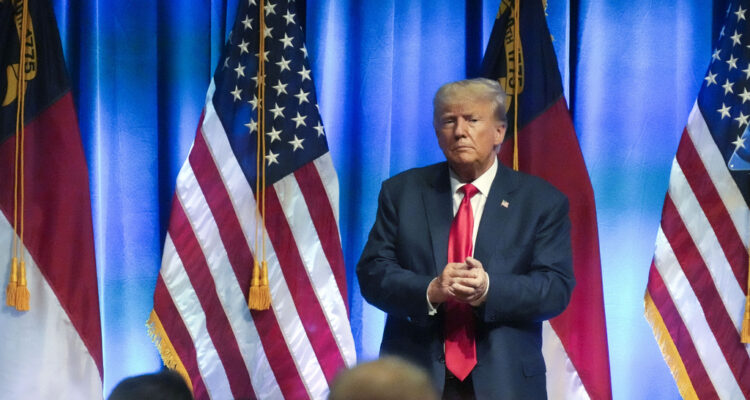The attempt on Trump’s life has increased his chances of winning in November, but other events could do the opposite.
By Amir Taheri, Gatestone Institute
Last week, Republicans were back under the Republican Party’s convention limelight in Milwaukee. This time they looked as determined to send Donald J. Trump to the White House in November as they were in 2016.
Eight years ago, Trump looked like a bolt out of the blue that, though threatening the serenity of American political sky, would prove a passing nuisance.
Then Trump didn’t fit the mold shaped over almost two centuries of American nationhood. He was the first businessman to enter the inner circle of aspirants to the presidency.
Unlike the previous 44 presidents, he had no record of public service, civilian or military, and had never held any public office. Nor was he a graduate of the Ivy League elite universities, nor a winner of many chic scholarships.
By all accounts, Trump’s four-year tenure was a breathtaking if not nerve-wracking rollercoaster which, to everyone’s surprise, led to none of the disasters predicted by professional doomsters.
The economy did well as unemployment dropped and inflation remained under control. When leaving the White House after four years, Trump was the only US president in over a century not to have involved the US in a war.
Trump’s “MAGA revolution” didn’t lead to the palingenesis promised, but nor did it trigger the Apocalypse that the ruling elite had warned against.
Fast-forward to Milwaukee last week.
This time Trump, wearing the halo of the one who was saved, led his cheering supporters to presumption of sailing to victory in November.
The “MAGA” slogan remained, but the post-assassination attempt Trump also presented a 16-page program.
To such un-Trumpian novelties one might add the presence this time of scores of “regular” Republicans, many of whom had sworn they would never join his dance. He even chose one of them, US Senator JD Vance of Ohio as his vice-presidential running-mate.
Trump set aside the “humdinger” text he had prepared for the convention and came out with a speech that, though fiery, had a soothing undertone.
Pundits are already speculating about the possibility of a Trump-II model that might soften his rougher edges, act in a more disciplined way, accept a larger measure of teamwork and, even name a token Democrat as part of his putative Cabinet in a tradition respected by several presidents since the 1960s — in short, become less-Trumpian.
Will such a transformation increase Trump’s chances of winning back the White House?
My answer is: no. Eight years ago, millions of Americans voted for Trump because he didn’t look or sound like regular politicians. Many called that a protest vote, which it certainly was to some extent.
This time, however, Trump can attract a vote of adhesion to an agenda which, although chaotic, at least hints at some of the reforms the US political system needs.
These include a rebalancing of the powers of the federal government and the states and the authority of the president as head of the executive power in the context of a debate that started at the birth of the new nation.
The Trump camp also talks of reforming the educational system, especially at university level, where wokism is seen as growing gangrene.
Promising to end the war in Ukraine and designating China as a potential foe may be headline-catching but do not amount to a coherent foreign policy.
Despite its many shortcomings, Trump’s term at the White House didn’t end badly, partly because he acted on instinct rather than pseudo-sophisticated “strategic thinking”.
A businessman, Trump realized that time is a key element in pursuit of any goal and that achieving small successes is better than chasing big but unattainable goals.
Reading and understanding the 922-page Project 2025 and the 16-page RNC platform paper alone may take the four years that a president has in the White House.
Turning even a fragment of that hefty wish-list into reality would also require control of the Congress and the Senate, which is not always a given for the many in the White House.
In 2016, few pundits believed that Republicans could capture the White House.
They were proved wrong this time; however, more and more pundits predict Trump’s victory.
President Joe Biden is not in the best shape, and the coalition of minorities that has provided the backbone of the Democrat Party since the 1950s is no longer so solid.
Latest polls show that at least 40 percent of Hispanics may vote for Trump this time. He may also get an incredible 30 percent of the African-American vote and more than a quarter of the Jewish vote.
However, it isn’t over until it is over. The attempt on Trump’s life has increased his chances of winning in November, but other events could do the opposite.
As Harold MacMillan liked to say: “In politics watch out for events; my boy! Events!”




